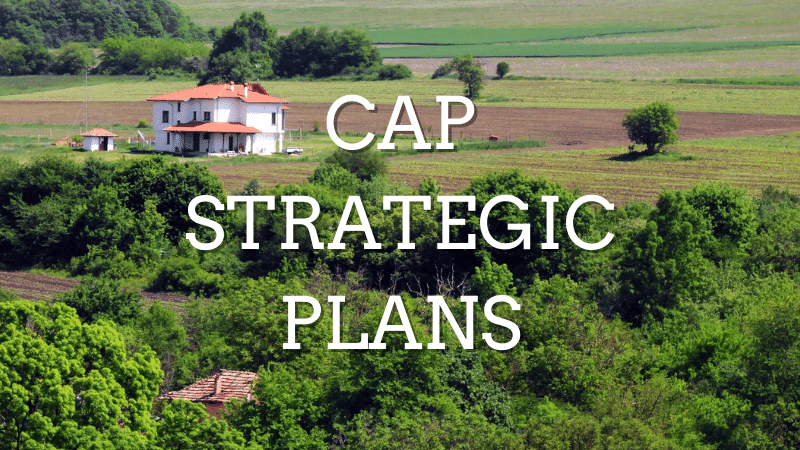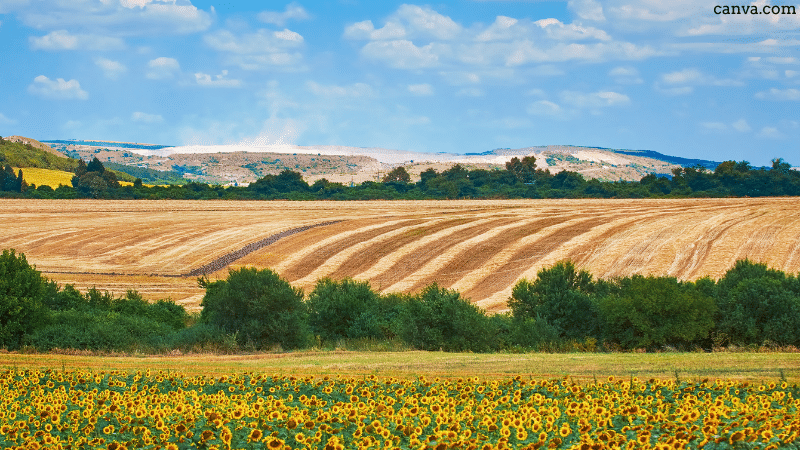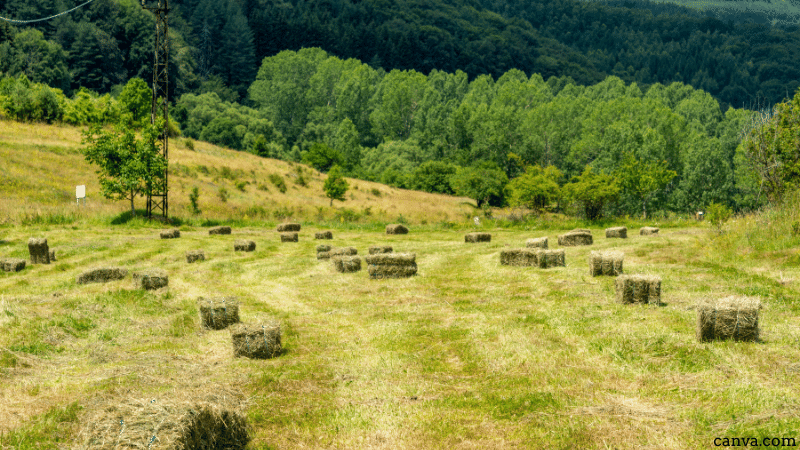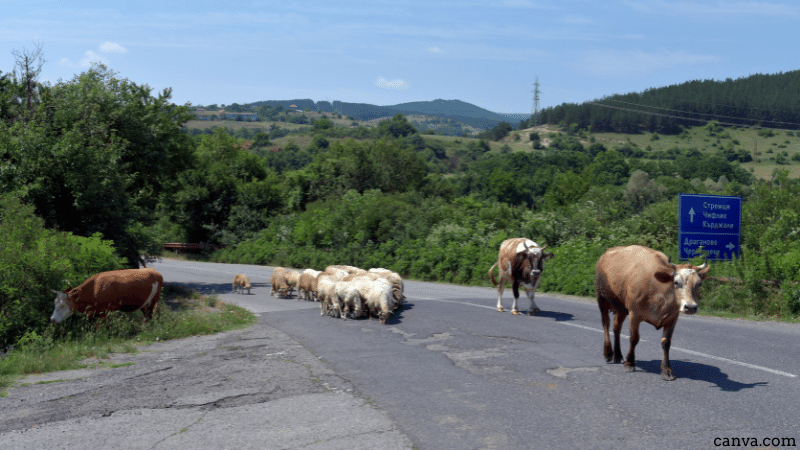
By Yanka Kazakova and Vyara Stefanova, Society for Territorial and Environmental Prosperity (STEP), Bulgaria
As a civil society organisation working in public benefit for sustainable rural development and conservation of High Nature Value farming, the Society for Territorial and Environmental Prosperity (STEP) believes that Bulgaria’s CAP Strategic Plan must be corrected in order to be in line with the objectives of the European Green Deal, the EU’s Biodiversity and Farm to Fork Strategy. In this article, it highlights essential changes to be made, from targets and monitoring to measuring coherence and consistency.
Introduction
Although there has been some improvements in Bulgaria’s CAP Strategic Plan (CSP) over the past 6 months, with the return of the High Nature Value (HNV) farming support and the increased budget for organic farming, the content remains insufficient to respect even the minimum requirements of the CSP Regulation. Serious gaps and inconsistencies with the European Green Deal, EU’s Biodiversity and Farm to Fork strategies can be observed in the current draft of the Bulgarian CSP. Notably, Article 105, framing the “no backsliding principle” requiring higher ambition in terms of environmental and climate objectives compared to the 2014-2020 period, is not respected at all for nature and biodiversity conservation.
We consider it extremely worrying that the recommendations of the ex-ante evaluation of the Strategic Plan are not reflected in the official version of the CSP. Most of the proposals and recommendations received from the representatives of environmental organisations were not taken into account without any justification. It turns out that the stakeholders’ consultations (mandatory under the EU Regulation), were pro forma.
The CSP was approved by the Council of Ministers and sent to the European Commission without the mandatory environmental assessment and assessment of its compatibility with Natura 2000 areas. The overall nature protection and biodiversity conservation ambition is very low in terms of stated priorities, objectives, schemes/interventions, target areas and budgets. As there is still time to adjust the CSP, we highlight here below the not only essential but also legally required changes to be made in the CSP to increase the level of ambition in the support to HNV farming and biodiversity protection in Bulgaria.
Decreasing budget and inconsistent monitoring
One of the biggest problems of the CSP is that compared to the 2014-2020 programming, budgets for nature and biodiversity have been reduced. There is less budget for the Natura 2000 measures with significantly reduced target areas for the new period while the number of Natura 2000 sites eligible for support have more than doubled under the Habitat Directive. This goes against the “no backsliding principle” as described above.
Globally, payment levels set out in the CSP are not justified by clear calculations. Some of the payment levels per hectare are significantly reduced, without any justification. Moreover, the CSP does not specify the possible combinations of schemes and interventions from the first and second pillars. We believe that it would be particularly important in order to prevent double funding and budget draining.
Beside funding irregularities, many monitoring aspects of the CSP are incomplete and in some places incorrect. Those specific issues should therefore be addressed:
- Outcome and performance indicators, especially regarding biodiversity, environment and climate objectives are based on incorrect provisions.
- The monitoring and control system, notably on the effects of planned eco-schemes and interventions for biodiversity conservation, is incomplete. There is, globally, a continuous lack of monitoring of the environmental and climate effects of the CAP funding despite the fact that the recommendations of the ex-ante evaluation of the 2014-2020 CAP and the ex-post evaluation of the 2007-2013 CAP did state the need to develop an impact monitoring system for individual interventions on environmental elements.
- Target values for biodiversity conservation through agricultural activities lack ambition. This translates into incomplete or missing interventions related to biodiversity conservation and insufficient public funds earmarked for biodiversity, environment and climate conservation.
Target values for biodiversity protection
The current CSP sees significant reduction of the funds specifically related to biodiversity conservation, compared to the 2014-2020 period. This is highlighted by many target values of result indicators that are very low and not improving on the last CAP programming:
- The target value of result indicator R33 (improving Natura 2000 management) indicates that only 5,34% of the Natura 2000 network area (60 000ha) will be supported. In 2020 alone, the areas supported under the Natura 2000 measure for agricultural land under the 2014-2020 CAP were 407 255 ha.
- The target value of result indicator R34 (preserving landscape features) indicates that only 1,48% of Utilised Agricultural Area (UAA) will be supported by landscape management commitments.
- Target value of result indicator R31 (preserving habitats and species) indicates that only 1.36% of the UAA will support biodiversity conservation and restoration commitments, including HNV farming.
- Concerning the agri-environmental climate measure (AECM) for traditional seasonal grazing practices, the target value aims to support 10 455ha of pastoral lands in National Parks, Nature Parks and Natura 2000 sites when, in 2020, this measure was supporting 20 443ha in National Park territories only.
Permanent grassland discrimination
On permanent grassland management, most of the criticisms already presented in our article published last year remain relevant. The context hasn’t changed, with areas of permanent grassland having been reduced by more than half in around ten years. The definition of permanent grassland in the CSP hasn’t been adapted to national and regional characteristics, which leads to a significant loss in forage areas for farmers with grazing livestock but also of conservation-relevant habitats in the Natura 2000 network.
Permanent grassland support in the eco-schemes
In terms of type of schemes, areas supported and planned budget, there is an over-targeting of eco-schemes towards arable land to the extent that eco-schemes will support 114% of the available arable land, but only 27% of the available grassland. This highlights yet another tendentious favoring of cereal production (the main user of arable land – 84% in 2020) at the expense of pastoral livestock farming.
The budget for the different eco-schemes is distributed in the same way with 70.3% of the budget allocated to arable land, 9.8% to permanent grassland and 8.6% to permanent crops. The largest budget (29.4%) is earmarked for the eco-scheme for crop diversification, which does not require a significant change to the usual agricultural practices in Bulgaria and whose contribution to the objectives of the Green Deal and biodiversity conservation is controversial and minimal. Only 15.6% of the eco-scheme budget is earmarked for the creation and protection of environmental infrastructure. Moreover, the proposed eco-schemes do not comply with the National Priority Framework for Action on Natura 2000.
Specific example of poor eco-scheme architecture
1. Eco-scheme for maintaining and improving biodiversity and ecological infrastructure
The calculated payment levels under the eco-scheme are illogical, unjustified and biased. The justification of the payment levels presented for the three types of land use (arable land, permanent grassland and permanent crops) is completely identical in content but ends up with unfairly varying subsidies. For example, the compulsory clearance of dry and low branches for single and groups of trees will be paid at EUR 591/ha for arable land; EUR 283/ha for permanent grassland and EUR 901/ha for permanent crops. The physical activity to be carried out is the same, only the type of land use in which the alleged trees are located differs. We believe that support levels should be determined by the type of environmental infrastructure, not by the land use in which it is located.
Moreover, the minimum percentage of environmental infrastructure to be supported is not specified. We therefore recommend that stepped support be introduced to reflect the environmental benefits:
- Baseline payment level for environmental infrastructure of over 4% to 10% landscape features and elements within them.
- Level 1 with bonus payment for 10.1% – 15% landscape features and elements in them.
- Level 2 with higher bonus payment for 15.1% – 20% landscape features and elements in them.
- We also propose to consider a bonus payment for the connectivity of environmental infrastructure elements in adjacent farm blocks.
2. Eco-scheme for extensive permanent grassland maintenance
Despite the CSP specifically quoting that “extensive management through grazing is needed for all natural habitats and species habitats to improve conservation within and outside Natura 2000” and that the “total share of environmentally sensitive grasslands in Natura 2000 sites (and covered by GAEC 9) is 426 348 ha”, the target value for support under this scheme covers only 64% of the permanent grasslands in Natura 2000 sites defined as sensitive.
We urge that the eco-scheme budget and therefore the target value of hectares planned for support be increased in line with the needs identified. We believe that a clear distinction should be made between the different types of permanent grassland and that the minimum and maximum densities of livestock should be consistent with their conservation status. In most cases, in poorly productive and ecologically sensitive permanent pastures, a grazing density above 1 Livestock Unit/ha would lead to a deterioration of permanent grassland conservation status.
Rural Development measures for nature and biodiversity
Sustainable grazing land management in agricultural land
This measure needs to specify which permanent grassland will be supported, how hay meadows will be supported and include the maintenance of permanent grassland by mowing. Given the change in the scope of HNV farmland in 2019 compared to 2007 (see our previous article), it is imperative that a reassessment of its scope and quality is carried out at the start of the current programming period to ensure that AECMs specifically target grasslands.
Restoration and maintenance of degraded grazing areas
There is no clarity on how the interventions proposed (ploughing, reseeding with non-native grass mixtures, fertilisation) will contribute to biodiversity conservation, habitat/species conservation or restoration. We urge that the text be clarified and that relevant indicators be included. The description of the intervention should specify what stocking density will be allowed after restoration and the list of approved grassland mixture of species and their conformity for HNV farming and Natura 2000 sites should be provided. The authorised stock densities have to be determined by a specialised agronomist, taking into account the specific geographical and climate conditions of land.
Payments for agricultural land in Natura 2000 sites
This intervention is foreseen to be applied in Natura 2000 sites with issued designation orders as well as those with approved Management Plans. A minimum of 186 sites for conservation of natural habitats will be added to the current scope of the measure. These areas are not reflected in any way in the target values of the areas planned to be supported and the corresponding financial means. Moreover, the planned budget for the intervention has been halved compared to the 2014-2020 programming, which will most likely lead to the termination of support once the budget is exhausted.
Traditional seasonal grazing practices (pastoralism)
As explained in the above section on target values for biodiversity, the target value set for support of 10 455ha clearly shows that the intention is to implement the measure again only in National Parks, not respecting the monitoring reports and recommendations of the Ministry of Environment and environmental NGOs.
Establishment and restoration of environmental infrastructure
Research and publications indicate that a minimum of 10% of farmland should be occupied by landscape features that have the highest ecological benefit in relevant area. These include semi-natural features such as grassland, including shrub pasture, trees, wetland or floodplain, connective features such as buffer strips, hedgerows, ditches, etc., but no productive areas such as nitrogen fixing crops or green cover areas.
In the framework of the CSP, Bulgaria proposes to support environmental infrastructure through both eco-schemes and AECMs. However, to be coherent, we suggest that:
- the listed ecological infrastructure be extended with tree formations and shrub vegetation, especially in grasslands.
- conservation of green infrastructure be decided at regional level with maintaining measures in areas with predominant extensive farming and targeted restoring actions in intensive areas. Green infrastructure coverage should be between 10% and 20% at regional level.
- We believe that the creation/restoration of environmental infrastructure should be supported through non-productive investment.
- Should it remain in the AECM, we recommend introducing stepped support to reflect the environmental benefits (as presented for the eco-scheme “maintaining and improving biodiversity and ecological infrastructure”).
Conclusions
In conclusion, we believe that the arguments and recommendations set out above lead to the need to revise and supplement the CSP so as to comply with Bulgarian and European legislation and to achieve compliance with the approved strategic documents related to biodiversity in agricultural land and rural areas.
Download this article as a PDF
 This article is produced in cooperation with the
This article is produced in cooperation with the
Heinrich Böll Stiftung European Union.
 This article is a synthesised translation of STEP’s work which can be found in its original form on the STEP website.
This article is a synthesised translation of STEP’s work which can be found in its original form on the STEP website.
More on CAP Strategic Plans
Changes “required” to Ireland’s CAP Strategic Plan – European Commission
French CAP Plan: What Opportunities for Change During the New 2022-27 Presidential Term?
CAP, Fairness and the Merits of a Unique Beneficiary Code – Matteo Metta on Ireland’s Draft Plan
ARC Launches New Report on CAP as Member States Submit Strategic Plans
Slashing Space for Nature? Ireland Backsliding on CAP basics
Quality Schemes – Who Benefits? Central America, Coffee and the EU
Civil Society Organisations Demand Open and Ambitious Approval of CAP Plans
CAP Strategic Plans: Germany Taking Steps in the Right Direction?
CAP Strategic Plans: Support to High-Nature-Value Farming in Bulgaria
Commission’s Recommendations to CAP Strategic Plans: Glitters or Gold?
German Environment Ministry Proposals For CAP Green Architecture
CAP Performance Monitoring and Evaluation Framework – EP Position
A Rural Proofed CAP post 2020? – Analysis of the European Parliament’s Position
CAP Beyond the EU: The Case of Honduran Banana Supply Chains
CAP | Parliament’s Political Groups Make Moves as Committee System Breaks Down
CAP & the Global South: National Strategic Plans – a Step Backwards?
CAP Strategic Plans on Climate, Environment – Ever Decreasing Circles
European Green Deal | Revving Up For CAP Reform, Or More Hot Air?
Climate and environmentally ambitious CAP Strategic Plans: Based on what exactly?
How Transparent and Inclusive is the Design Process of the National CAP Strategic Plans?
[1] AgraFact N°32-22, Rose O’Donovan & Chris Lyddon
[2] https://www.euractiv.com/section/agriculture-food/news/commission-under-pressure-to-ease-rules-on-nitrates-use-in-farming/
[3] https://www.eurovia.org/wp-content/uploads/2021/11/2021-11_EN-Proposition-Document-Social-Conditionality.pdf
[4] https://ec.europa.eu/eurostat/statistics-explained/index.php?title=Organic_farming_statistics







